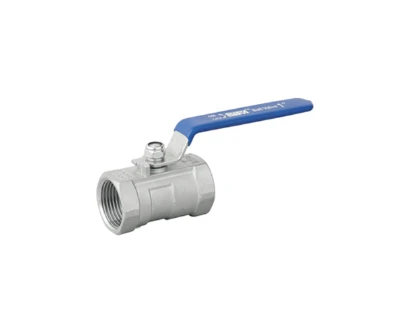Feb . 16, 2025 12:20
The sphere of fluid control has seen numerous advancements over the years, yet the ball valve with flange connection continues to be a pivotal component for various industries worldwide. This article delves deeply into the nuances of the ball valve with flange connection, highlighting its unparalleled utility, engineering excellence, and why it remains a preferred choice for experts in the field.

Ball valves are essential tools in the realm of fluid control, offering precise regulation of liquids and gases with impeccable reliability. What sets the ball valve with flange connection apart, however, is its superior design tailored to withstand high-pressure environments while ensuring ease of maintenance and installation.
The engineering behind ball valves with flange connections revolves around its distinct structure. The core of this valve comprises a perforated, pivoting ball which controls fluid flow. When the valve is turned, the ball's hole aligns with the flow and permits passage. The design is ingeniously simple, yet incredibly effective, minimizing drop in pressure and potential leakage, which is crucial for maintaining system efficiency and safety.

The addition of flange connections offers distinct advantages over other joint types. Flanges employ a lip on the edge of the pipe, enhancing stability and connection strength. This translates to easier installation, as flanges can be bolted, allowing disassembly without causing damage to adjoining pipes. Consequently, this feature proves particularly beneficial in industries such as oil and gas, chemical processing, and water treatment, where frequent maintenance and inspections are requisite.
One of the foremost reasons industry experts favor ball valves with flange connections is their versatility and durability. These valves are fabricated from robust materials like stainless steel, brass, and PVC, each offering unique benefits. Stainless steel is lauded for its corrosion resistance and strength under extreme temperatures. Brass, on the other hand, is valued for its bacteriostatic properties, making it ideal for potable water applications. PVC offers cost-effective solutions while still maintaining good chemical resistance properties.
The ball valve with flange connection excels in applications demanding absolute reliability. From controlling flow in vast oil pipelines to ensuring precision in pharmaceutical manufacturing processes, these valves are designed to meet rigorous standards. Their ability to handle diverse media such as slurries, gases, and steam without compromising performance is a testament to their engineering brilliance.
ball valve with flange connection
Furthermore, innovations in technology have introduced advanced sealing mechanisms and improved construction techniques. These advancements mitigate issues such as thermal expansion and contraction, which often plague other valve types. Enhanced sealing ensures that these valves maintain a perfect seal under fluctuating temperatures and pressures, vital in preventing leaks that could lead to operational failures and safety hazards.
Installing a ball valve with a flange connection is straightforward due to its compatibility with a breadth of piping systems. This compatibility stems from international standardization of flange sizes, ensuring that replacements and installations do not require extensive alterations or custom parts. This universality not only simplifies sourcing and maintenance but also underscores the valve’s adaptability across different sectors and regions.
Performance reliability over long operational life is another notable attribute, reducing the frequency of shutdowns and repairs. For companies, this equates to significant savings in maintenance costs and ensures uninterrupted service. Operators also benefit from the user-friendly design, requiring minimal training to operate effectively, thus reducing errors in handling and execution.
Deploying ball valves with flange connections provides a strategic advantage in ensuring operational efficiency. Its blend of design sophistication, robust construction, and ease of use positions it as an indispensable component in modern fluid control systems. Professionals seeking optimal performance, longevity, and adaptability continue to endorse this valve type, confirming its reputation as an industry standard.
In conclusion, the ball valve with flange connection is not merely a component but a crucial asset integral to the reliability and efficiency of industrial fluid management. Its enduring presence in the market reflects a legacy of innovation, trust, and excellence in engineering, underpinning operations across a multitude of sectors. With its proven track record and ongoing advancements, the ball valve with flange connection will undoubtedly continue to serve as a cornerstone in fluid control systems for decades to come.


 Call us on:
+86-311-86935302
+86-311-86935302
Call us on:
+86-311-86935302
+86-311-86935302
 Email Us:
info@thriveonvalve.com
Email Us:
info@thriveonvalve.com South of Huanmadian Village Town, Ningjin County, Xingtai, Hebei Province, China
South of Huanmadian Village Town, Ningjin County, Xingtai, Hebei Province, China